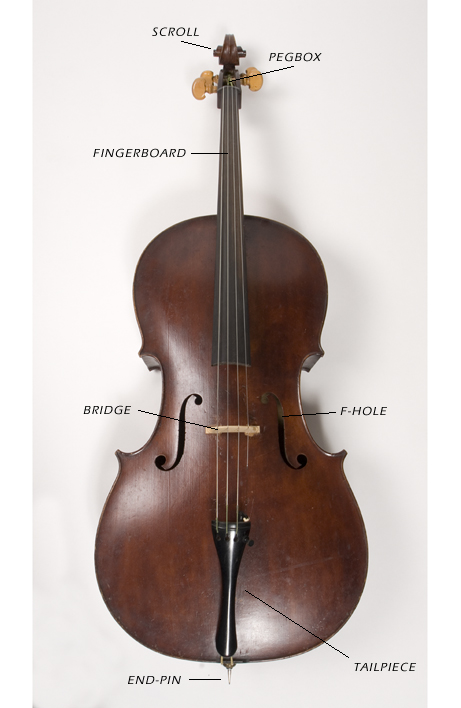About The Violoncello
The violoncello (or cello) is the lowest-sounding member of the violin family. It is part of the standard orchestra and is the bass voice of the string quartet, as well as being part of many other chamber groups.
Tuning and Range
The violoncello is capable of covering nearly the entire range of pitches produced by the human voice, from the soprano to the alto of an adult choir. The violoncello has four strings referred to by their standard tuning, which is in perfect fifth intervals:
A-string (highest sounding - the A below middle C)
D-string,
G-string
C-string (lowest sounding).
Construction
The violoncello is larger than the violin or the viola but smaller than the double bass. The violoncello is played in an upright position, held by the knees of a seated musician, resting on a spike called the endpin. The player draws the bow horizontally across the strings, making them vibrate.
The violoncello is a complex instrument consisting of many different parts. Although the majority of it is composed of wood, some parts can be made of steel or other metals and/or composite material. Modern strings have a steel, gut, nylon or other synthetic core, covered with various kinds of metal winding.
Examine the parts of the violoncello in more detail.
Sources:
Forsyth, Nicole. "Mrs. Macquarie's Cello and Colonial Sydney: Open Air Gaol or Picnic Pleasure Ground?" Unpublished paper presented at 28th National Conference of the Musicological Society of Australia 28 September - 1 October 2005 Sydney Conservatorium of Music. [MSA Conference 2005: Music and Social Justice].
Harvey, Brian W. The Violin Family and its Makers in the British Isles: an illustrated history and directory. Oxford: Clarendon Press, 1995.
New Grove Dictionary of Musical Instruments. (ed.) Stanley Sadie. London: Macmillan 1984 3 vols.
Images reproduced courtesy of the Historic Houses Trust of New South Wales. © All rights reserved

 Violoncello home page
Violoncello home page




